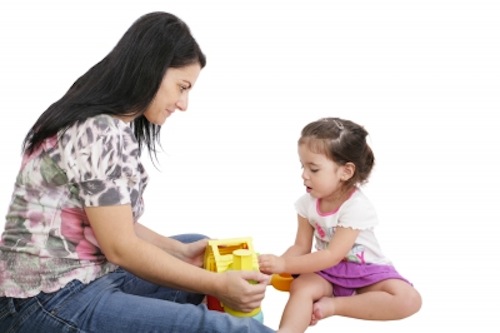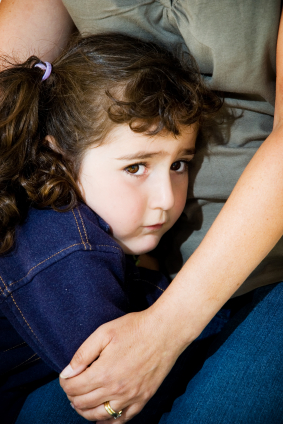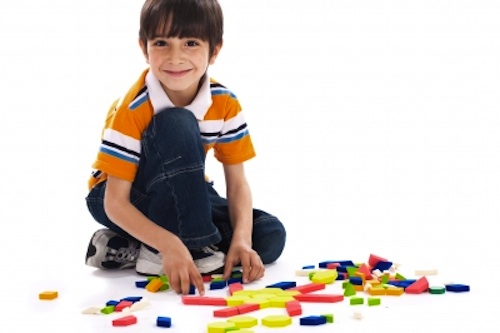Bridging the communication gap between parents and care providers
Child care providers can now connect more easily with parents, keeping them up-to-date on their children’s day-to-day care with Daily Connect. And, because we think this app could be the next tool in every child care provider’s tool belt, we want to offer it to you for {SPECIAL DISCOUNT}
The mobile and web app gives care providers the opportunity to record everything from naps, milestones and diapers to mood, location and temperature. You can even photograph and record the type of games each child is playing.
Daily Connect eases the mind of worried parents, and helps bridge the communication gap between child care provider and parent. Instead of calling to check in, parents can simply view the app, leaving the care provider free to care for the children. This is also a great tool for tracking data over time and helping ease the transition between caregivers during shift switches. Because it’s quick and easy to enter information on Daily Connect, the data will be more accurate than it would be on a traditional, hand-written information daily sheet.
The handy app even has extra features that cater to those managing large child care centers on its web app. Attendance reports and classroom and teacher management help directors of child care centers make sure everyone is where they need to be. Even customize the app with your own company’s branding. Those interested in managing large groups through a Professional Membership get to try their first month for free.
If the idea of getting started in a little daunting and you don’t want to sacrifice the data you’ve already gathered, don’t worry. Daily Connect is happy to help. Simply forward Daily Connect the documents with your children’s information and they’ll upload it into the system, so you’ll be ready to get started in no time.
For iPhones, download the app {instructions and code}
If you’d like it on your iPad, download Daily Connect {instructions and code}
It’s also available for Android phones, as well as on your regular, every-day browser.
The best part? Daily Connect believes in providing the best customer service possible. That means that if you hit any bumps in the road, feel free to reach out, and they’ll give you a hand. In fact, they’re so eager to help that they’ll respond to any and all customer support emails the same day you send them.
10 Signs that You Found the Best Daycare
You hunted high and low, near and far to find the perfect daycare for your child. You’re pretty sure you did a good job and overall are pleased with your pick, but every now and then a gnawing pang of worry pops into your stomach. How can you be sure you made the right choice? Here are a few signs that tell you that you found the best daycare possible:
1. The staff calls both you and your child by your names when you arrive. And they remember to ask things like, “How was the camping trip this weekend?”
2. Your good friend, family member or trusted coworker highly recommended the place.
3. There are lots of staff member and the worker to child ratio is very high, allowing for more one-on-one attention.
4. They have one of those annoying lists of rules that prohibit things like peanuts. Although often long and sometimes irritating, those rules mean that the daycare really cares about your child’s health and safety.
5. You checked with the state and they meet all of the health and safety codes.
6. They remind you when you’re running low on diapers or let you know when your child didn’t finish eating. Communication is priceless.
7. The daycare doesn’t offer unwanted advice too often. While you want to stay in the loop and know what’s going on, you probably don’t want someone telling you how to parent.
8. Parents of the other children seem friendly and you’ve either already organized play dates or are planning to soon.
9. The daycare has a low turnover rate. That’s how you know the staff loves what they do and care about their work.
10. Your child comes back from daycare excited. Don’t worry if he or she is hesitant to go in the morning; that’s perfectly normal. But if they come home bubbly and thrilled to tell you about all the cool stuff they did, you know you’ve got a winner on your hands.
Sources:
-“8 Tips for Choosing Child Care.” Parents.com
-“What Makes a Great Daycare.” Parents.com
-“Daycare Dilemmas.” Parents.com
-Photo courtesy of photo stock/freedigitalphotos.net
Choosing the Right Daycare
 Choosing a daycare can be both overwhelming and scary. Whether you’re considering a care facility that a friend swears by or flipping through the yellow pages, it’s important to be well informed and highly involved with your selection process. When shopping for a new daycare, here are some of the most beneficial questions to ask:
Choosing a daycare can be both overwhelming and scary. Whether you’re considering a care facility that a friend swears by or flipping through the yellow pages, it’s important to be well informed and highly involved with your selection process. When shopping for a new daycare, here are some of the most beneficial questions to ask:
Is the daycare licensed?
While most states do require childcare providers to fulfill licensing and background checks, not all do. Make sure that, whether the facility is located in a personal home or its own building, the caretaker is properly certified to watch your child. Do they have CPR training? How often must they pass inspections? Before committing to a daycare, contact your state’s childcare licensing resource to make sure it’s certified. Many states even have online tools that allow parents to search for certifications.
How long has the company been in business and how long have each of the caregivers been with the company?
Lower turnover rates generally mean a happy, expert-filled environment.
What is the adult to child ratio?
You want your child to be getting as much one-on-one time as possible. Not only does specialized attention keep your little one busy and engaged, but more adults means more safety. Here is the recommended adult to child ratios, based on children’s ages:
- Under two years old: 1:4
- Over two years old: 1:12, but no more than two of those children should be under one year old and not more than four under two years old
How big is the group size and what are the ages of the other children?
Generally, the smaller the group, the better because it means more attention for each child. After age two, it’s also important for your little one to be around other children his or her age. Because toddlers start socializing around this age, it’s valuable to set them in an environment where they’ll be around other tots at a similar level.
Do you get a good feeling from the center and staff?
Go with you gut. Visit the daycare in person so that you can meet the workers, see what the space looks like and check out the kind of activities the other children are participating in. If the facility looks good on paper and passes all of the questions above, but you still don’t feel completely comfortable committing, it’s probably not a good fit. Keep comparing your options.
5 Surefire Ways to Fight Germs at Daycare and Preschool
 There’s no germier combination than dozens of little grabby hands, runny noses and the irresistible urge to taste everything. No matter what precautions your childcare service takes, daycares and preschools are loaded with potential colds, flus and fevers. Here are some tips to help fight off those bugs:
There’s no germier combination than dozens of little grabby hands, runny noses and the irresistible urge to taste everything. No matter what precautions your childcare service takes, daycares and preschools are loaded with potential colds, flus and fevers. Here are some tips to help fight off those bugs:
1. An apple a day…
You know the saying. But it’s true! Healthy eating habits help keep children’s immune systems strong. Make sure they maintain a well-balanced diet. The USDA recommends kids ages 2 to 3 should eat a cup of fruit and a cup of vegetables daily.
2. Catch those zzzs.
In addition to the proper nutrients, enough sleep is also essential for a strong immune system. Here are the total hours of sleep children should get, depending on age:
- 6-12 months: 14 hours
- 1-2 years: 13-14 hours
- 2-3 years: 12-14 hours
- 3-5 years: 11-13 hours
3. Wash hands!
Remind your kiddo about the importance of washing his or her hands. Make sure they understand that the job needs to get done after using the bathroom and before they eat. You can monitor them at home to make sure they’re being diligent with their hygiene.
4. Be courteous to other families.
Read up on your daycare or preschool’s guidelines about when to keep a child home. If your child is super sick, save other families the trouble of going through the same thing. We all know bugs spread like wildfire with little ones so keep your kid at home until he or she is no longer contagious.
5. But remember: things will only get better.
As time passes, your child’s immune system will adjust to its new germy world. If it’s their first time in daycare or preschool, they’re likely to be sick a lot more in the beginning. As their little bodies adjust to the new surroundings, they’ll build the ability to fight off germs, keeping them happy and healthy.
Sources:
-Austin, Elizabeth. “8 Tips for a Healthy School Year.” Parenting.com.
-“Healthy Kids Diets Guidelines.” Eating Well.
-Gelman, Lauren. “Baby and Children Sleep Chart.” Parents.
Child Care Centers for all of Texas NOW AVAILABLE!
Attention Texas Parents:
We now have licensed child care centers in Texas on MomTrusted.com!

Now find child care in Houston, Dallas, San Antonio, Austin, El Paso, Fort Worth, Arlington, Corpus Christi, Plano, Garland, and ALL locations in Texas on MomTrusted.com now!
Separation Anxiety: 8 Tips to help your child’s transition
 Finding childcare and/or preschool that fits your needs is a relief. That relief, however, is generally short lived as it quickly comes time to take your child for the first time. More accurately, it comes time to say goodbye to your child for the first time. This emotionally volatile, stomach-turning moment is some painful for everyone involved. Many preschool teachers and childcare providers would probably argue that the children are more resilient than their parents… so here are a few tips that will help you manage the separation anxiety on both sides and make those first couple of weeks less stressful.
Finding childcare and/or preschool that fits your needs is a relief. That relief, however, is generally short lived as it quickly comes time to take your child for the first time. More accurately, it comes time to say goodbye to your child for the first time. This emotionally volatile, stomach-turning moment is some painful for everyone involved. Many preschool teachers and childcare providers would probably argue that the children are more resilient than their parents… so here are a few tips that will help you manage the separation anxiety on both sides and make those first couple of weeks less stressful.
1. Prepare your child. Start talking to your child several weeks out about the changes that will take place. In language they can understand and make their own, talk through what the new day will look like.
2. Create excitement. As you talk to her, talk about the exciting things she will get to do in her new classroom or with her new friends.
3. Acknowledge it may be scary or sad. Be upbeat but don’t sugar coat the experience. Let him know he may be sad or get a bit scared and that is okay. Talk to him about what he can do if he feels like this. For younger children this is hard but it helps to focus on soothing activities or objects that will help him adjust.
4. Establish a routine. This is incredibly important. Children need structure and predictability especially in the face of change. Develop your own separation routine with your child. Let them help create the routine, making it theirs. It might be three hugs and 4 kisses. Or, it may be a story then waving goodbye from the window. Whatever it is, create it and stick to it.
5. Plan to stick around. The first week is usually the hardest. Schedule accordingly. Help your child ease into their new environment with you around as a safety net. Encourage him to explore more independently, gradually becoming more confident. This will help as you shorten your ‘drop off’ time
6. Find a goodbye buddy. Every preschool or childcare is different but if possible make a separation buddy. Talk with the teachers/staff members and determine what will work best for your schedule and who your child is naturally bonding with. Ideally, this will be part of your routine giving your child a sense of stability and security as you depart.
7. NEVER sneak away. While it may be tempting to slip away quietly while she is engaged in her new surroundings, you are only fanning any anxiety she may have. Mommy or Daddy disappearing is not a concept you want her to try to make sense of. Again, create your routine and stick to it.
8. Show interest in their day. Give your child a fun and open way to show you the things they did while you were away. This helps them know even though you are not their you still care and are thinking about them. It also makes finishing the day exciting and fun for them.
The Value of Early Education
A recent editorial in the Detroit Free Press again highlighted the importance of early education and care for the individual child AND for the prosperity of a City and State. I’ve observed it is much harder to make big structural changes in good times. It’s easier for people, companies, governments to maintain the status quo when things are good. It isn’t until the proverbial $#*& hits the fan that change becomes a welcome guest at the party. It’s hard to argue that there is a city that has faced greater challenges than Detroit’s recent struggles.
Much has been written about potential solutions to the City’s woes but this editorial in particular caught my attention because (disclosure – I am admittedly a big proponent of early care & education) of their direct correlation between Michigan’s financial stability and success and an investment in early education and care. And, my hope that Michigan may be the perfect storm of circumstances that enables the case for making early education and care a fundamental building block of any solution may finally reach receptive ears. Noting that a lack of quality early care and education leads to 11% of Michigan kindergartners repeating the grade and costs the state $100M annually, must open at least one pair of ears.
I get that the choice to devote funds to education and more specifically early education is a challenging one for politicians and legislators. Many of the pay offs are over the long haul and most politicians, by the time this investment pays dividends, their political career has long been over. But, 1- there are real dollars at stake and, 2- at some point (and I hope now is that point) you have to change what you put in to get something different back out. Yes, there will always be more immediate gains to be had, but the research has repeatedly shown that the return on investment in early education and care is a multiple of those immediate gains.
I truly hope there is a great test case very soon that other states will rally around. It may be Michigan, it may not, but Band Aids will not fix what is broken. We need a systemic change. As parents, however, we can’t rely on others to solve the problem. We have to be smarter parents…understand what’s important in the early years and what quality early care and education really means. Most importantly, we can’t only outsource our children’s development. There are tons of great teachers and care providers across the country, but the most influential and important person in your child’s early development is you!













